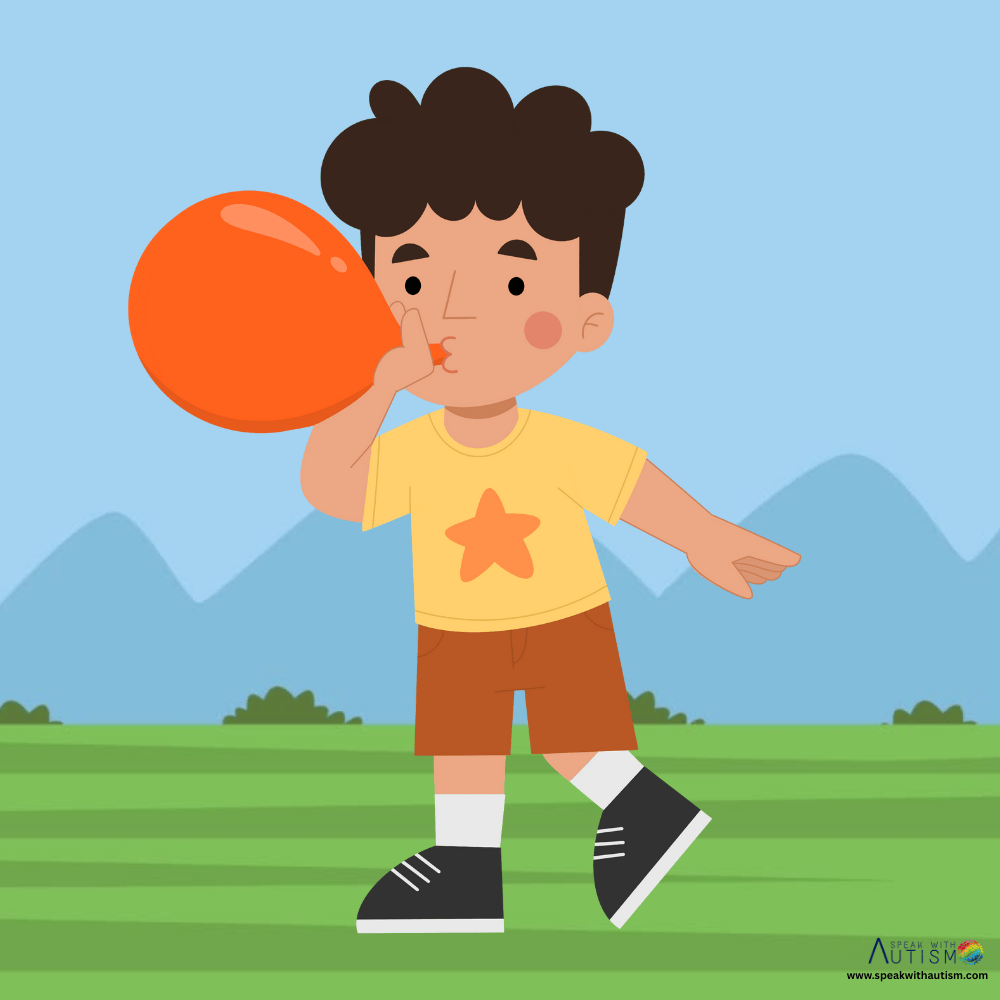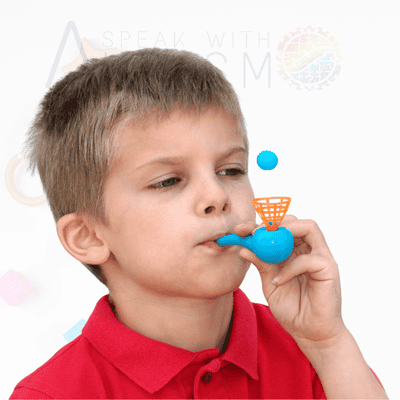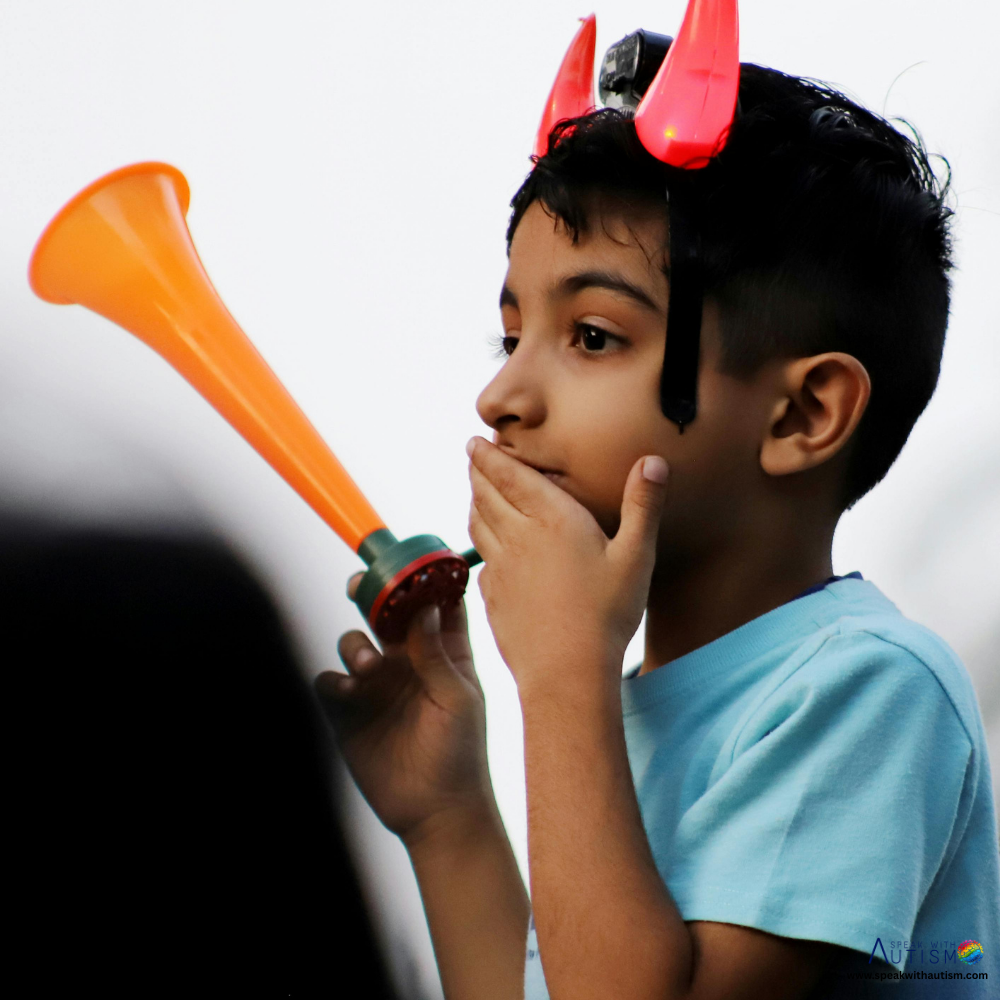Blowing Techniques and Activities are very effective for teaching and practicing blowing to your child because they develop breath control, lip strength, and oral motor skills—all of which are important for speech. You mentioned “candle blowing” and “balloon blowing,” so I will include other techniques and activities that can be easily done at home. These will also be fun for your child and will instill the habit of blowing. Below are 20 techniques and activities.
Table of Contents
Blowing Techniques and Activities
1.Candle Blow

- Keep a candle a little distance away and ask the child to blow it out and extinguish it.
- Use a small candle initially and gradually increase the distance.
- For safety, hold the candle in your hand.
2. Balloon Blowing (Balloon Inflate)

- Give a small balloon and ask the child to fill it with air.
- First, try inflating it yourself and then let the child try.
- Supervise to avoid the risk of choking.
3. Bubble Blowing

- Make bubbles with soap water and a bubble wand.
- Have your child blow it with the wand—this is a fun activity that teaches blowing.
4. Cotton Ball Race
- Place a cotton ball on the table and have your child blow it up and move forward.
- You can add a twist to the race by creating a “finish line.”
5. Straw Bubbles
- Have your child make bubbles by putting a straw in a glass of water.
- Use a small glass at first, then increase the quantity of water.
6. Feather Float

- Blow a feather up in the air. – How long can the child keep his wings up, make this game.
7. Paper Flick
- Place a small piece of paper on a table and ask the child to blow it away.
- You can try papers of different sizes.
8. Pinwheel Spin

- Give a pinwheel (spindle) and ask the child to blow it away.
- It is colorful, so it will generate interest in the child.
9. Ping Pong Blow
- Place a ping pong ball on a table and make it roll with a blow.
- You can play by blowing from both sides and making “goals”.
10. Tissue Dance
- Hold a small piece of tissue paper in your hand and ask the child to blow it.
- It is light, so it moves easily.
11. Whistle Blow

- Give a small whistle and ask the child to blow it to play.
- Use a simple plastic whistle in the beginning.
12. Harmonica Play
- Give a small harmonica and ask the child to blow it to produce sound.
- This gives blowing practice along with music.
13. Blow Paint

- Pour some watery paint on the paper and spread it by blowing with a straw. – This is a creative and fun activity.
14. Bubble Wrap Pop
- Place a small piece of bubble wrap and ask the child to blow it to make a “pop” sound (by acting).
- This mixes blowing with imagination.
15. Toy Horn

- Give a small toy horn or trumpet and ask the child to blow it to make a sound.
16. Floating Boat
- Fill a bowl with water, place a small paper or plastic boat in it, and ask the child to blow it to float.
17. Dandelion Blow
- If you find dandelions (flowers) outside, ask a child to blow the seeds away.
- This is natural and fun.
18. Straw Rocket
- Make a small “rocket” out of paper, put it in a straw, and ask a child to blow it away.
19. Leaf Blow
- Place a small leaf on a table and have a child blow it away.
- This can be done indoors or outdoors.
20. Fog the Mirror
- Keep a small mirror and ask the child to blow and create “fog” (with a “haaa” sound).
Tips for Teaching Blowing
- Demonstrate First: Demonstrate each activity yourself so that the child can understand.
- Short Sessions: Do not do more than 5-10 minutes at a time, so that the child does not get bored.
- Encourage: When the child blows, motivate him by saying “Shabash!” or clapping.
- Start Easy: Start with simple things (like bubbles or cotton balls) in the beginning, then move on to tougher tasks like balloons.
- Breath Control: Teach the child the rhythm of taking deep breaths and blowing (like “breath take a breath, take a breath”).
- Patience: If the child doesn’t do it on the first day, don’t force it—a little practice every day will help him get used to it.
Signs of Progress
- If the child starts making sounds like “phoo” or “haaa” while blowing, this is the first step in speech initiation.
- Increasing the movement of the lips and the use of breath while blowing is also a positive sign.
These techniques will strengthen your child’s blowing skills and form a foundation for speech production. If you want to focus more on any of these or need more ideas, let me know! Is this helpful for you?
Frequently Asked Questions (FAQ’s)
How do blowing activities help with speech?
Blowing activities improve breath control, lip strength, and oral coordination. All of these skills are important for producing speech. These exercises activate the muscles in the mouth, which prepare the child for speaking.
Do blowing activities work for every autistic or late-talker child?
Every child is different. Blowing activities are generally safe and effective, but some children may have sensory or motor difficulties. If there is no response, you should consult a speech therapist.
My child is not interested in blowing activities, what should I do?
You should adopt a game-like approach, such as bubble race, tissue dance, or pinwheel blowing. First, you give a demo, then ask them to copy it. Don’t forget to give prize and reward
Which age group is suitable for blowing activities?
These activities are suitable for children above 2 years of age, when their oral motor control starts developing. But close supervision is a must.
Should blowing activities be done daily?
Yes, doing 2–3 blowing activities for 10–15 minutes daily is beneficial. Regular practice shows improvement.
What to do if there is no improvement with blowing activities?
If there is no response after 1–2 months of consistent practice, assessment by a speech-language pathologist is a must. Hearing or neurological issue may also be involved.

o8tdmw